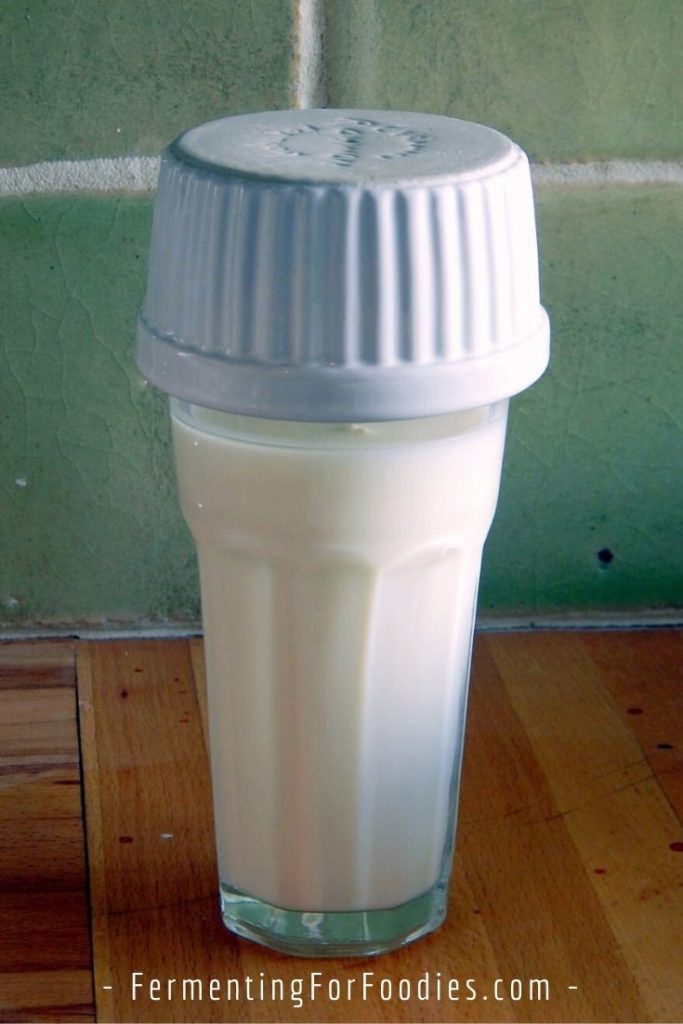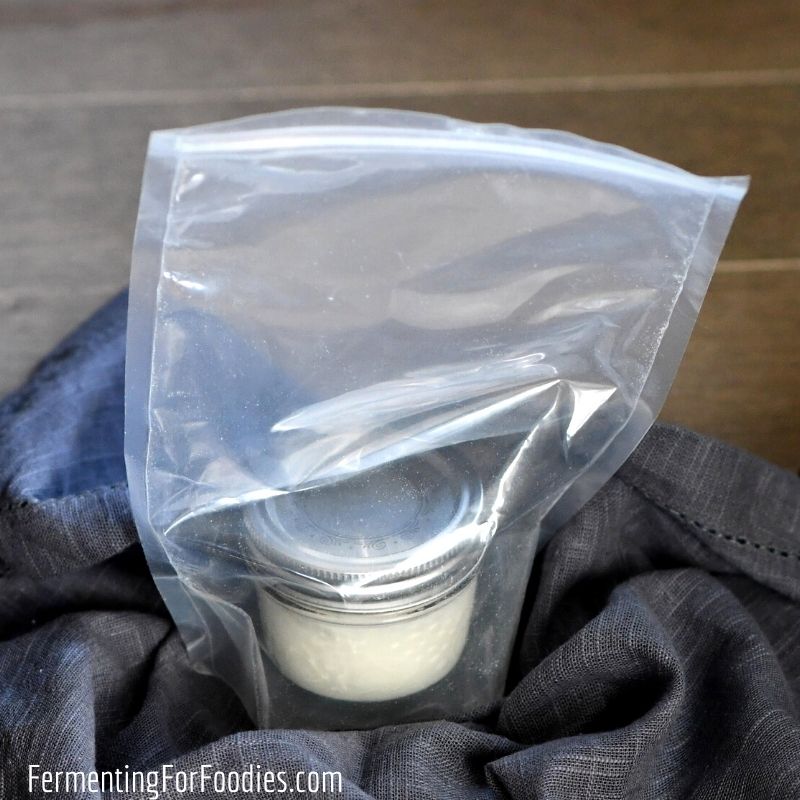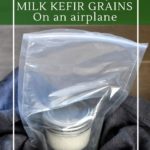Milk kefir is probably my favorite ferment. We enjoy it nearly every day. We even bring it along on holidays! It’s surprisingly easy to travel with milk kefir grains.

We’ve taken our kefir camping. We took it on a month-long backpacking trip to Europe. Our milk kefir grains are well-traveled!
Why travel with milk kefir grains
- Kefir is ideal for long-distance travel. It’s a great way to preserve milk without refrigeration. So it’s particularly perfect for camping.
- Kefir is a really robust culture and doesn’t mind traveling.
- As a gluten-free person, I bring kefir along so I can make my own bread and baked goods. I just make sure we stay somewhere with a kitchen. Then I can skip the grocery store styrofoam bread and enjoy homemade soda bread, pancakes, and muffins!
General Advice for Traveling with kefir grains
Milk kefir grains are a very robust culture. Our grains have been in our family for several generations.
As long as you regularly culture milk kefir, the grains should be able to survive the rigors of travel.
Here are a few pieces of advice for traveling with milk kefir:
- Divide your kefir grains, leaving at least 1/2 of your grains at home in a jar full of milk for safekeeping. It’s always good to have a backup just in case something happens to the grains while traveling. Once we gave our traveling grains to a fellow fermenter!
- Kefir will live in a jar full of milk in the fridge for at least 2 months. So the grains you left behind should be fine as long as you aren’t gone for more than 2 months.
- Take only a small grain (about 1 Tbsp) since you aren’t likely to use as much kefir when staying in hotels and eating out of restaurants.
Taking Milk Kefir on a Car, Train, or Bike Trip
Our milk kefir grain has been on trains, boats, and car trips. It’s even come cycle camping!
Here’s some advice for taking kefir on a long-distance trip.
- Have at least two containers going, so you can keep rotating the grains in fresh milk.
- Use whatever type of container you feel most comfortable with. I typically used glass, since it is the least reactive. But it is perfectly fine to use hard plastic or non-reactive metal for a road trip.
- If you’re using an air-tight lid, be sure to pop it open every day to prevent the buildup of carbonation.
- If you’re not using an air-tight lid, then make sure that the containers stay upright or you’ll end up with a mess.
- A cooler is handy, particularly when you’re producing more milk than you can drink. I find a small cooler bag is particularly handy as it helps keep the containers upright.
Taking Milk Kefir on a Plane

Wondering how to take milk kefir on a flight?
I live on an island in the Northwest Pacific… so Europe is far! Here is how I fly with milk kefir:
- Pack the kefir grains with a just little bit of milk into an air-tight plastic container.
- Be sure to use a container that can handle the pressure of flying. Having a lid that will actually allow some milk and air to leak out is safer than an air-tight container.
- Always place the container in a ziptop bag as a second precaution against leaks.
- Depending on how long the flight was, the kefir may overculture and separate into curds and whey.
- When you arrive, buy a container of fresh milk and pop your kefir grain in for safekeeping until you are ready to start culturing. Don’t worry too much about what kind of milk. Kefir is pretty robust to changes, as long as you avoid UHT milk.
- It might take a few days for the kefir to overcome jet lag, but you should have it culturing nicely within a day or two.



I ferment my Kefir in Full Cream UHT with some added Full Cream Milk Powder every day and have done for years, they are perfectly happy and produce a wonderful creamy Kefir and grow quite quickly.
I like to make 1 litter at a time which are split into two half Litres and blended in the Nutribullet, half goes in the cupboard overnight for a second ferment, it goes nice and thick and I eat this like yoghurt, the other half goes in the fridge for use on cereal or just to drink.
I have never had a bad batch – ever!
Enjoy
Thanks! I didn’t know that kefir worked in UHT milk. Good to know. Cheers!